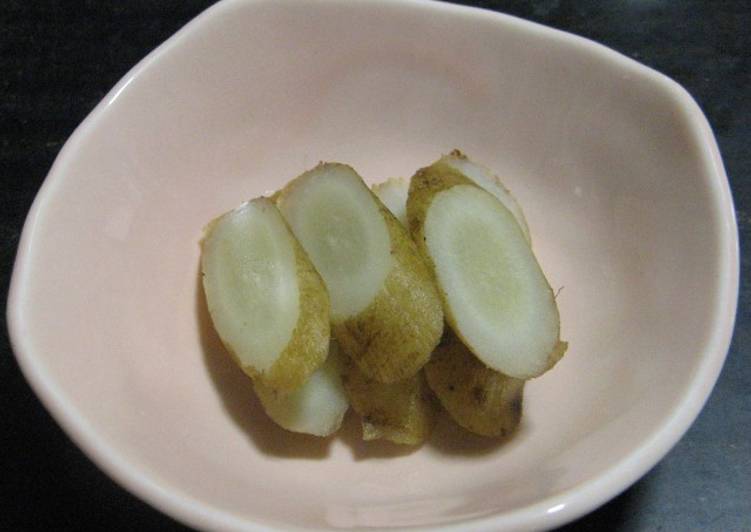
Hello everybody, it’s Jim, welcome to our recipe site. Today, I’m gonna show you how to make a distinctive dish, macrobiotic: burdock root simmered with umeboshi. One of my favorites food recipes. For mine, I will make it a little bit unique. This is gonna smell and look delicious.
Macrobiotic: Burdock Root Simmered with Umeboshi is one of the most well liked of recent trending foods on earth. It’s appreciated by millions daily. It’s simple, it is fast, it tastes yummy. They are fine and they look wonderful. Macrobiotic: Burdock Root Simmered with Umeboshi is something that I’ve loved my whole life.
This is a staple of macrobiotic cooking. It's also a great dish to have if you're looking to detox your body. You can use whole umeboshi, but I just use the pits leftover after using the umeboshi in other dishes.
To get started with this recipe, we must prepare a few components. You can have macrobiotic: burdock root simmered with umeboshi using 3 ingredients and 7 steps. Here is how you cook that.
The ingredients needed to make Macrobiotic: Burdock Root Simmered with Umeboshi:
- Make ready Burdock root
- Prepare or more Umeboshi pits
- Take Kombu seaweed for dashi stock (7 x 10 cm)
Burdock is a remedy for liver and gall. The most tedious part is that you have to julienne both gobo (burdock root) and carrot, and if you are not used to chopping veggies, it might be challenging Kinpira means a cooking style that you stir fry and simmer with sugar and soy sauce. The most common ingredients used for Kinpira is gobo and. Eating wild burdock root fresh will have a much different taste than dried powder supplements, though both will contain the same phytonutrients.
Steps to make Macrobiotic: Burdock Root Simmered with Umeboshi:
- Rinse and remove the soil from the outside of the burdock root using a scrub brush or other tool. Do not remove the peel as keeping it will add a pleasant aroma to the dish.
- Decide on the pot you will use, and cut the burdock root to a size that will easily fit in the pot. Add the burdock, umeboshi pit, kombu, and enough water to cover the ingredients into the pot.
- If possible, use an otoshibuta (drop lid), otherwise just use a regular lid for the pot.
- Once the water comes to a boil, reduce the heat to low, and simmer until the burdock softens. Check the burdock occasionally through this process. Try to simmer off as much of the liquid as possible.
- I modified the amount of burdock as I found the kind I was buying at the organic supermarket was much smaller than the usual variety.
- It is very important to make sure the liquid has been cooked off. If the umeboshi don't have much salt, the dish will be a bit bland, so make sure to add enough pits.
- Ah, I really did it. I burned the burdock roots black. Nothing to do now but to peel them before eating.
Burdock root is a good source of potassium, fiber, amino acids, calcium, and antioxidants, which can help boost immunity within the body. The root is also popularly dried and powdered or made into an oil extract for use as a dietary supplement as it has anti-inflammatory and antibacterial properties. Burdock root has many fabulous actions but its alterative properties are undoubtedly the strongest. This plant can strengthen the immune system (mainly thanks to the flavonoid quercetin), boost resistance to viral and bacterial infections, fight certain tumors and significantly reduce oxidative stress. Burdock root is a medicinal herb and food that has powerful anti-tumor, anti-fungal, anti-inflammatory, and anti-microbial properties.
So that is going to wrap this up for this special food macrobiotic: burdock root simmered with umeboshi recipe. Thanks so much for your time. I’m confident you can make this at home. There’s gonna be interesting food at home recipes coming up. Remember to bookmark this page in your browser, and share it to your loved ones, colleague and friends. Thanks again for reading. Go on get cooking!


